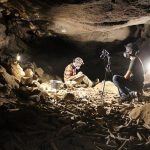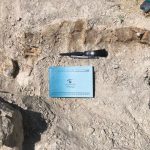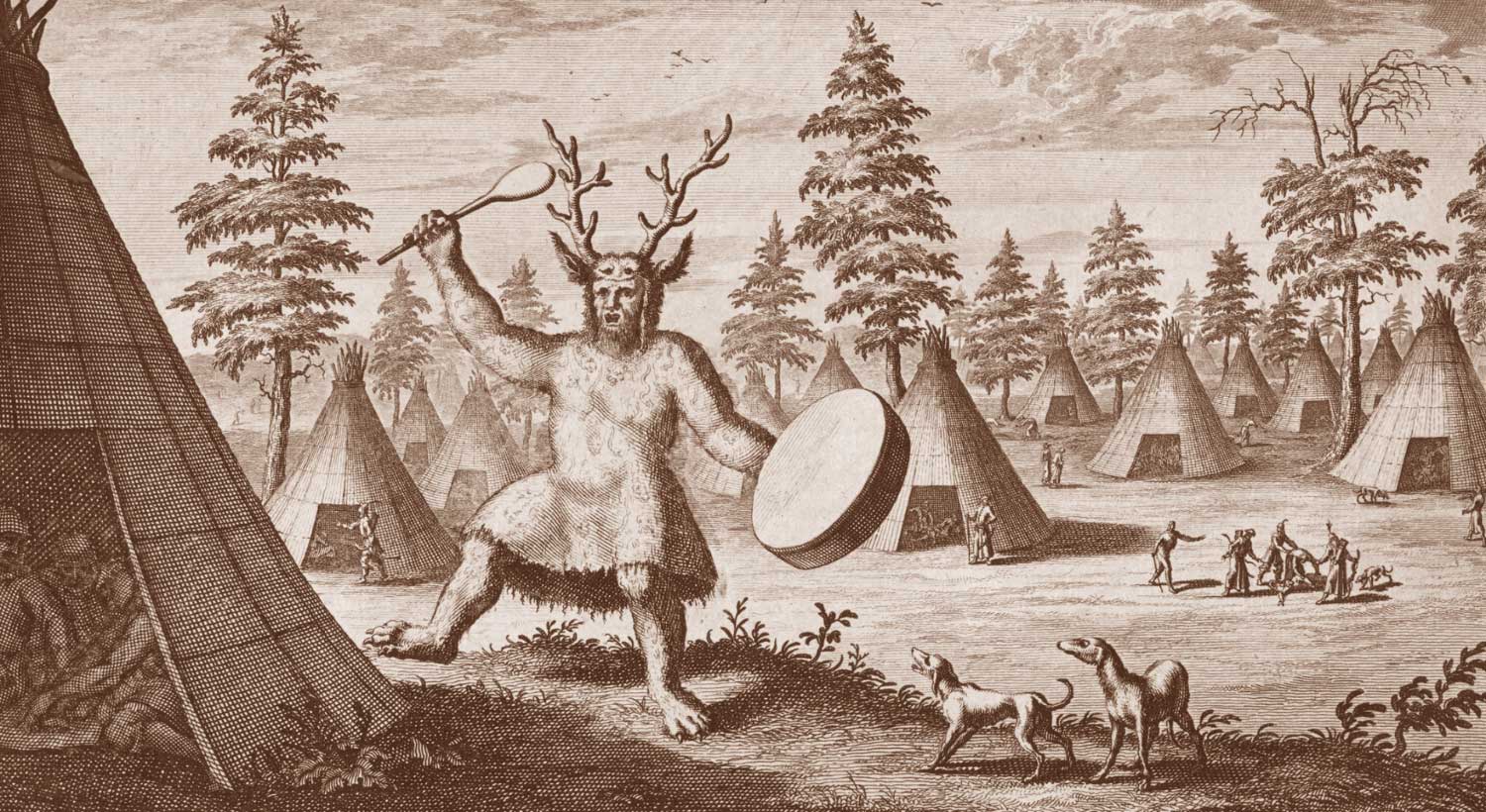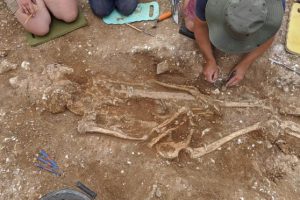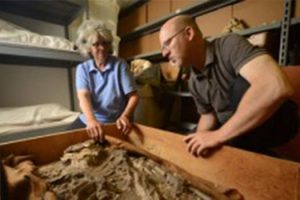
Archaeologists unearthed a total of 24 red deer headdresses at the Early Mesolithic site of Star Carr in North Yorkshire, UK, representing around 90% of all such known artifacts across early prehistoric Europe.
The artifacts are formed from the upper part of a skull of a male red deer (Cervus elaphus) with the antlers attached – the lower jaw and cranial bones having been removed and the frontal bone perforated.
The majority of the headdresses were discovered during archaeological investigations at the site in the 1940s though archaeologists unearthed a further three during excavations in 2013. The most complete of these is likely to have come from a male adult red deer though the animal was 50% larger than its modern counterparts.
To create replicas of the 11,000-year-old headdresses, a team of researchers led by University of York archaeologist Dr. Aimée Little used traditional tools and techniques (flint blades, hammerstones and burning).
The scientists also analyzed a number of cut marks radiating out of perforations on both sides of the red deer crania.
They concluded that hunter-gatherers were likely to have removed the head and superficially cleaned it before starting work on producing the headdress.
The first stage of the process may have involved removal of a large amount of antler possibly to reduce the weight of the headdress and make it easier to work. Some of the removed antler may have formed ‘blanks’ for the production of barbed projectile tips used for hunting and fishing.
But it is also possible that, in some cases, antler blank removal happened much later after the headdress had been used; in which case the process may have been a form of decommissioning of the headdress and/or the recycling of antler.
“Given the amount of worked antler present at Star Carr, including over 200 barbed projectile tips, this is a plausible theory,” Dr. Little said.
“This research shows how experimental archaeology can give important insights into rare ancient artifacts,” she added. “Knowing fire was used invokes a real sense of atmosphere surrounding the making of these ritual shamanic headdresses.”

Virtual reconstruction of a red deer headdress from the site of Star Carr, North Yorkshire, UK. Image credit: Aimée Little et al.
“These headdresses are incredibly rare finds in the archaeological record,” said Prof. Nicky Milner of the University of York, co-director of the excavations at Star Carr.
“This is the only site in Britain where they are found, and there are only a few other headdresses known from Germany.”
“This work into how they might have been made has given us an important glimpse into what life was like 11,000 years ago.”
________
Aimée Little et al. 2016. Technological Analysis of the World’s Earliest Shamanic Costume: A Multi-Scalar, Experimental Study of a Red Deer Headdress from the Early Holocene Site of Star Carr, North Yorkshire, UK.PLoS ONE 11 (4): e0152136; doi: 10.1371/journal.pone.0152136

